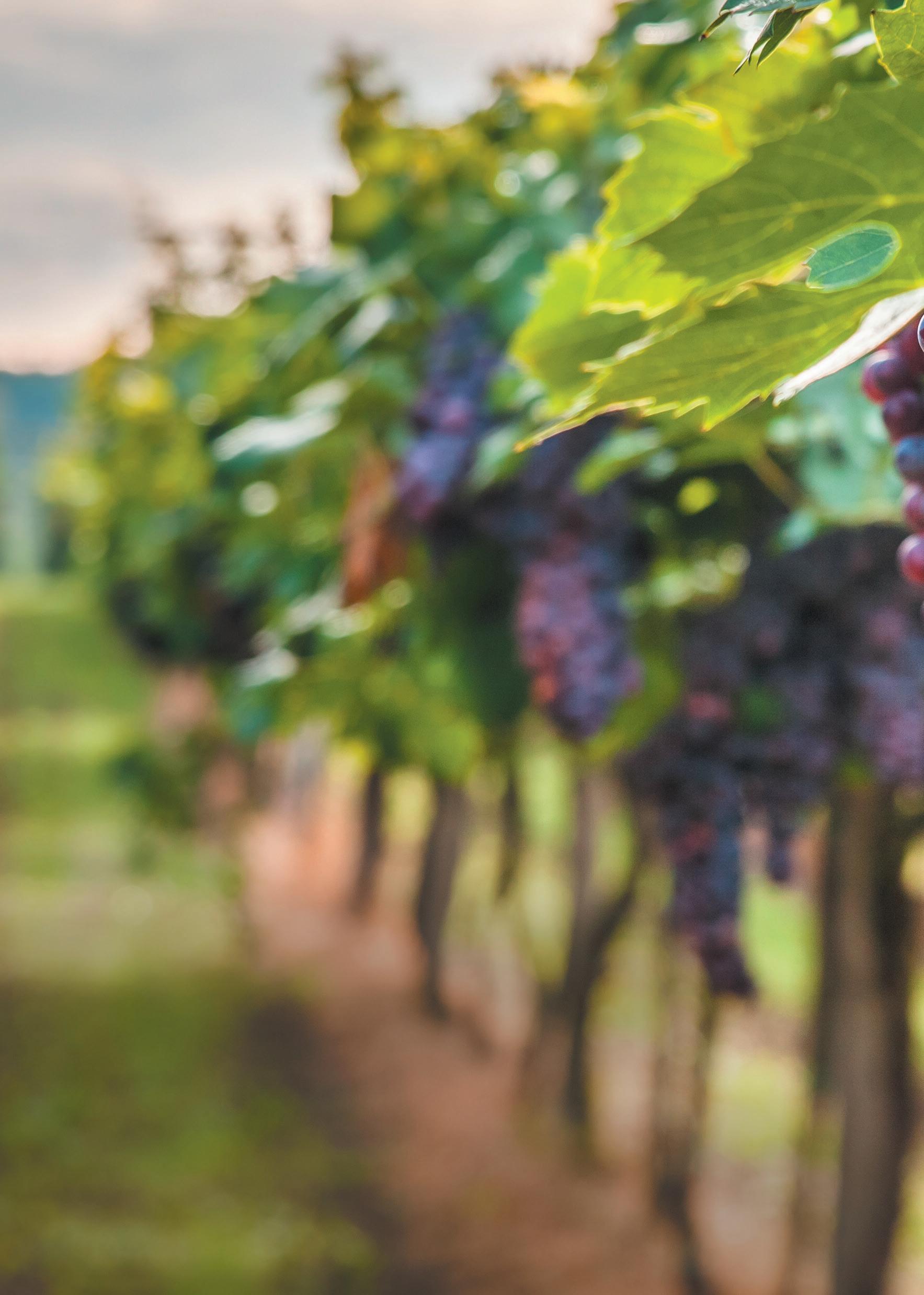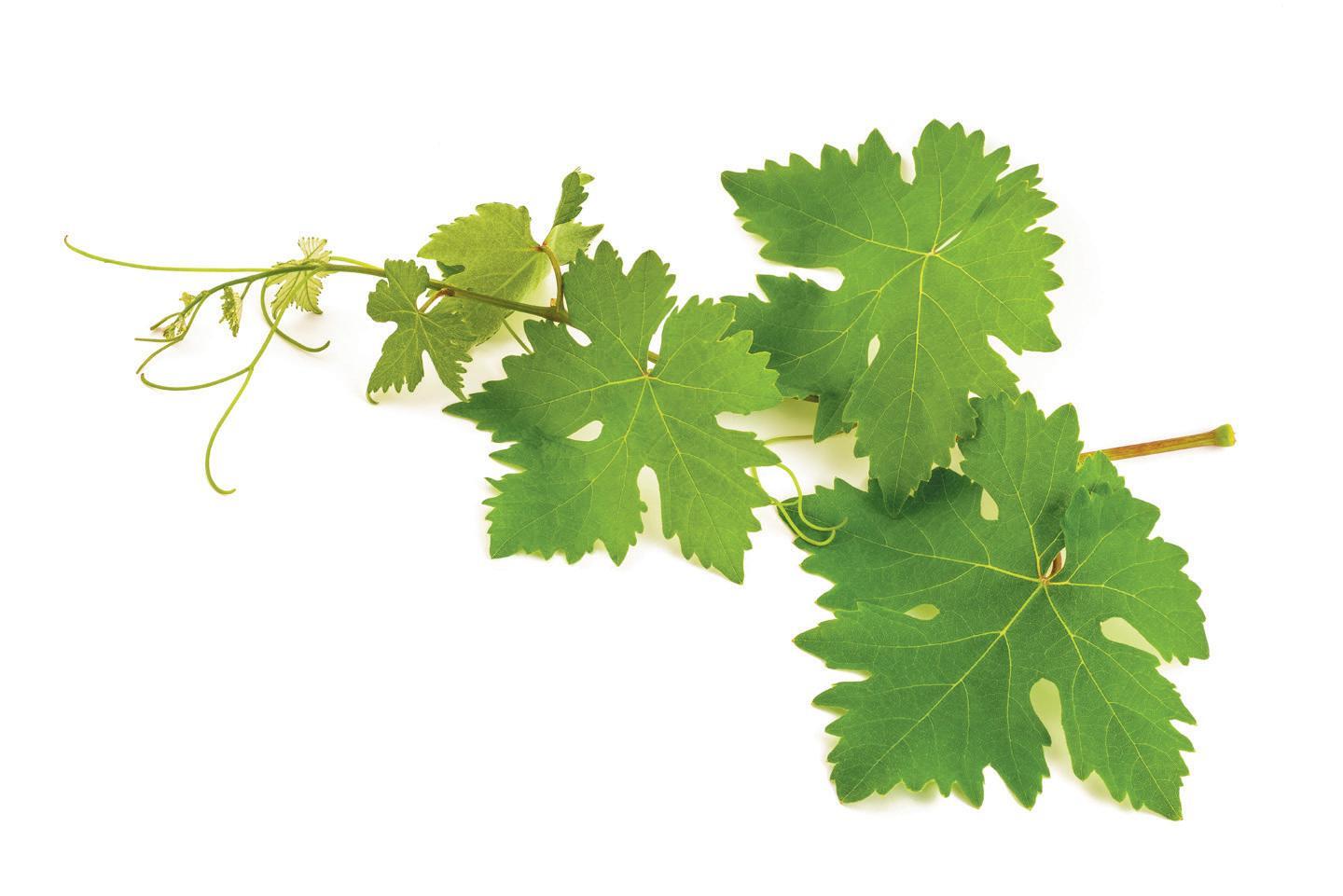
3 minute read
GLASS
from Burlington's - April 2023
by CPL One
With award-winning bottles and a thriving viticulture scene, English wine is enjoying its moment in the sun
Words: Kat Poole
Advertisement

When a little-known wine from Cotswolds vineyard Woodchester Valley took the highest possible award at the Global Sauvignon Blanc Masters 2022, the world of UK winemaking raised a toast. As the rst English still wine to achieve this accolade, triumphing over established international competition, it was a headlinemaking moment for an industry that until now has been primarily known for its sparkling varieties.
Not least because Sauvignon Blanc vines aren’t usually planted in England, and are more commonly cultivated in the Loire Valley, New Zealand or Chile. But times are changing. English wine is a young industry just beginning to show its potential, making it an exceedingly interesting time to be involved – for growers, makers, investors and, of course, those who simply enjoy drinking a glass or two.
On Fertile Ground
‘It’s a coming of age,’ explains Alex Hurley, winemaker at London Cru, London’s rst urban winery. ‘ ere were wineries planted in the UK around 50 years ago, which was really the investment phase. Carr Taylor and Biddenden are great examples; they saw the possibility before anyone else could even imagine it.’
Since those early days, winemakers have been re ning their understanding of what grows well here. ‘Historically, that has been grapes from Germany,’ says Hurley. ‘But in the past 10 or 20 years, the focus has been Champagne varieties: Pinot Noir, Pinot Meunier and Chardonnay.’
Now, as the success of Woodchester Valley’s Sauvignon Blanc suggests, growers are seeing the potential for still varieties – one uniquely positive outcome from an uncomfortable reality. ‘Sadly, it’s due to climate change,’ explains Hurley. ‘Warmer years – as we saw in 2018, 2020 and 2022 – have allowed grapes that may not normally ripen enough to make great still wines.’

Overseas Interest
Such rapid developments at ground level means the business side of the English wine industry is also moving apace. ‘Until this moment in time, the English wine investment market has been all about buying land, planting vineyards, developing brands and building distribution,’ says Justin Knock MW, director of wine at Oeno Group. ‘To this end, it wouldn’t be an exaggeration to expect this has exceeded £1bn over the past 10-15 years. We have seen a surge in the acreage of vineyards planted, a more than tripling of production – with further growth built in – and an endless string of good news stories about the high quality of English wine and sparkling wine in particular.’
It’s unsurprising, then, that interest has been international. ‘While much of the investment has been local, it’s been notably supported by the major Champagne houses who have become active vineyard developers in their own right, lending a huge amount of excitement and anticipation about the potential for the English wine industry to blossom.’
A Mature Approach
While there certainly appears to be a positive outlook for English wine, it’s still early days to consider investing in the market. ‘All of this is rather new,’ explains Knock. ‘And so investment in English wine as bottled stock is still virtually not even on the radar, and certainly not as developed as it is for ne wine made in other origins.’
As for the wines one might consider collecting? ‘ ere are few bottles at this stage that I could consider investment grade, simply because we don’t really know the ageing capability of most wines, and few have a long track record of production to even be examined. But the best candidates for me are the rst two releases from 2009 and 2010 of the top wines from Nyetimber – 1086 – and Tillington Vineyard –with 1086 becoming the rst English wine to launch at above £100/bt when it was released several years ago. Holding these in large format will be excellent collectors’ items and I can see them being highly sought-a er in ve to 10 years by champions of the English wine industry who want to show that England can take on the best prestige cuvées of Champagne and stand tall.’
Drinking It In
For now, though, there is much to celebrate about the evolution of English winemaking taking place throughout the country. ‘West Sussex has great still varieties,’ says Hurley. ‘In areas north of London, such as Essex, they’re producing standout still wine now, which 10 years ago no-one even knew was possible.’ Even boutique hotel group e Pig –renowned for its locally-sourced approach to hospitality – has its own vineyard, at the site of its newly opened South Downs outpost. ‘ ey are such good supporters of English wine,’ Hurley says. ‘I don’t think anyone can argue against supporting local, buying local, and pairing English wine with local produce.’ londoncru.co.uk/ oenogroup.com/
We’ll raise a glass to that.

Investing in English wine











